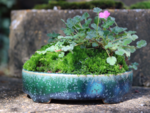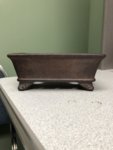Brian Van Fleet
Pretty Fly for a Bonsai Guy
No doubt! It even has a little red from reduction. Kinda adds a unique element.Thanks, Brian! It's been a long time coming, but I'm finally in! The first one is my favorite as well... the prototypical Tofukuji glaze that we all covet. I will say, though, that the second one is really very nice, too... a much more subtle glaze for a Tofu, but clearly his work, and the dimensions of the pot make it much more usable. Now, to find a tree that deserves to be in it...
I like the bottom of the second one better than the sides, and it’s a usable size.





















